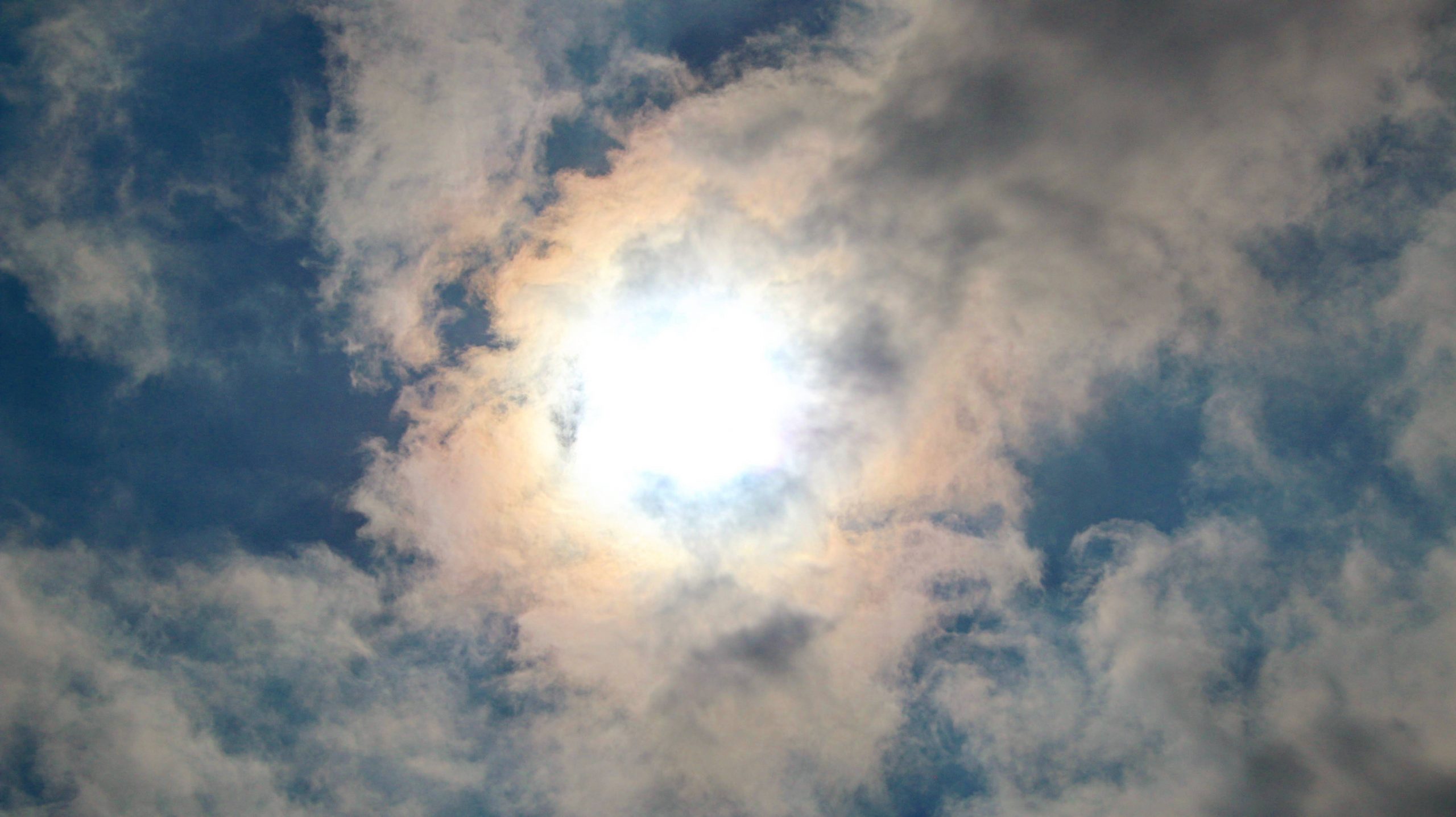Educational 18 October 2024

Look up the word ‘solar’ in any dictionary, and you’ll find definitions like “of, derived from, relating to, or caused by the sun” and “utilizing the sun’s rays, especially to produce heat or electricity.”
Most sources agree that solar involves the sun, so it stands to reason that solar lights do, too. But do they actually require the sun to operate? Do they need it every day? What happens when—eventually, inevitably—the sun doesn’t shine, and the skies are cloudy?
We often get questions like these, and we’re always happy to answer: don’t sweat it! (Not too much, anyway.) Solar panels can still collect energy on cloudy days, and as long as they have sufficient battery capacity to accommodate low sun periods, they will continue to operate. As always, it comes down to proper solar sizing. We can help!
Before we get to what happens on cloudy days, it’s worth a minute to understand how solar panels work generally. It’s a pretty technical process, but here’s a quick version, courtesy of the DOE:
“When the sun shines onto a solar panel, energy from the sunlight is absorbed by the PV cells in the panel. This energy creates electrical charges that move in response to an internal electrical field in the cell, causing electricity to flow.”
On sunny days, sunlight is strong and supplies ample energy to the solar panels, which gets stored in batteries for later use. But on overcast days, clouds diffuse the sun’s strength. Less energy reaches the solar panel, and less energy is generated and stored.
Does this mean your light won’t have enough ‘juice’ to switch on and maintain the required output for the night? Probably not. The battery still charges on cloudy days, even if it doesn’t fully recover (i.e., return to 100% charge capacity) by the end of the day. Still, in areas where cloud cover is typical, a few things should be done to ensure your solar lighting system works as intended.
The first thing you should look at is the size and quantity of solar panels. In the same way that a wider bucket will collect more water on a rainy day than a narrow one, solar panels with a larger surface area absorb more solar energy than smaller panels. Bigger (and more efficient) panels equal more energy captured.
Next, you need to optimize panel orientation and tilt angle. This is true no matter where the installation is, but it’s essential when direct sunlight is limited. In the northern hemisphere, panels should always point south to capture the most sun. In the southern hemisphere, they should point north. (Always towards the equator.)
Tilt angle follows similar logic. At the equator, where the sun is always pretty high in the sky (never less than 66 degrees at noon) flat panels can be used. As you move farther north or south, the lower the sun’s angle will be, and the more tilt will be required. For example, in Dallas, the optimal tilt angle is 30°; in Minneapolis, it’s 39°.
>>A handy tool you can use to determine tilt angle is the World Global Star Atlas website. You can also ask us!
If clouds are a concern, using solar lights with higher-capacity batteries is highly recommended. Remember when we said earlier that batteries will still charge on cloudy days, but they might not fully recover? That’s why you need backup power—to provide a buffer on days when a full recharge isn’t possible.
Let’s say you’re in Portland, OR, a notoriously grey place. On the first cloudy day, the battery recharges to 75%. That’s enough to run the operating profile—but only for one night. If it’s cloudy again the following day, it will start the night with a 50% charge (and the third night at 25%, and so on). This is not enough to run the profile, and the light will be forced to reduce its output or shut off completely.
Backup power (i.e., higher-capacity batteries) can help by storing energy captured on sunny days for use during periods of lower solar availability. If the batteries are too small, they won’t be able to store enough power to run the light and maintain output, which can be both frustrating to users and damaging to the system.
>>Want to learn more about batteries and backup power? Check out this article.
No matter what you’ve heard, solar lighting can be an effective, sustainable solution for areas with frequent cloudy and overcast days. Ensuring systems have enough solar collection and battery storage is essential. If you want reliable, uninterrupted light no matter the weather, contact our sales team to discuss your next project.
